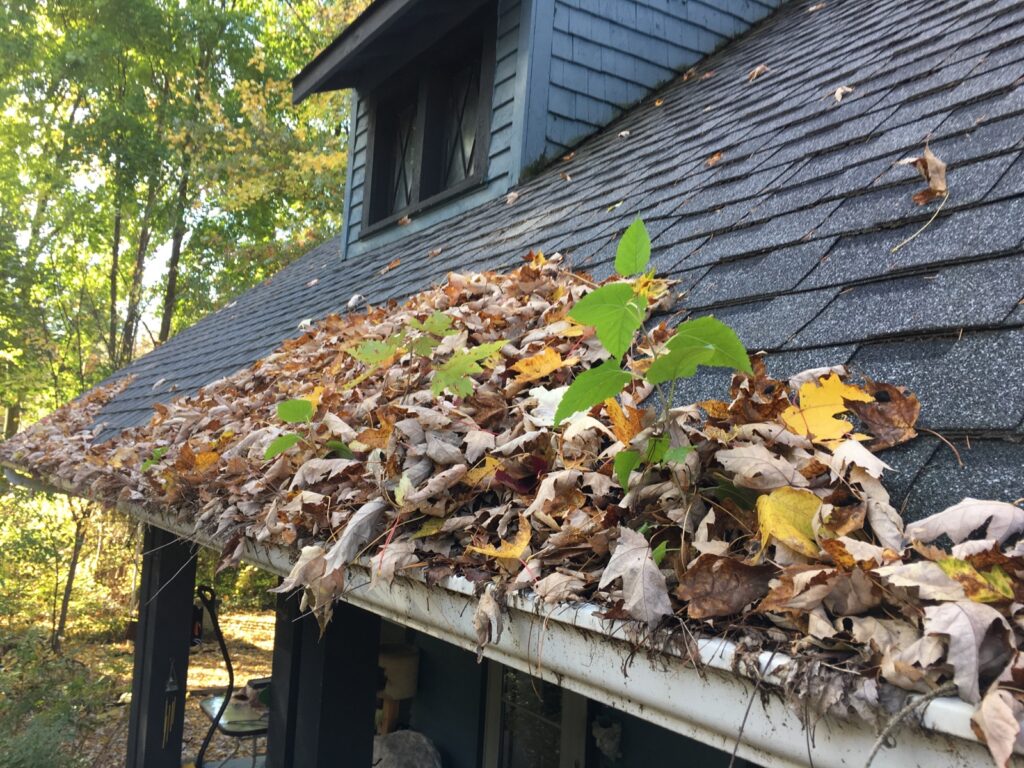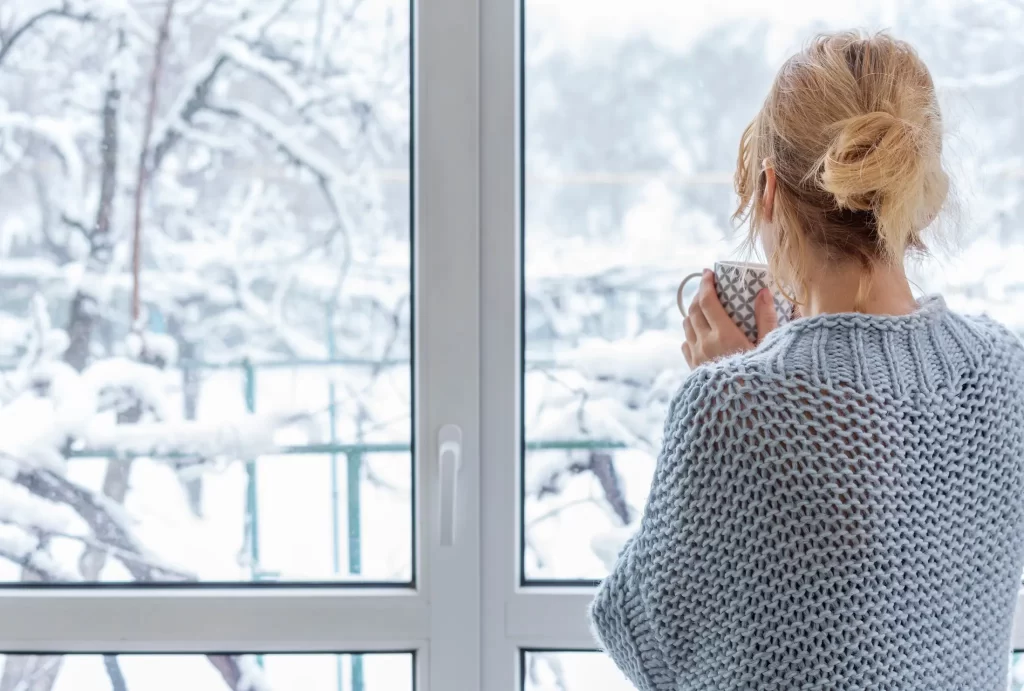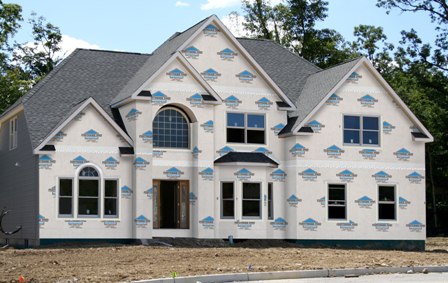Leaks, clogged gutters, skyrocketing energy bills—these are just a few of the serious issues homeowners on Vancouver Island face when they don’t prepare for the fall and winter. Water damage from overflowing gutters, drafty windows causing high heating costs, and poor insulation leading to uncomfortable cold spots inside the home all add up. These problems bring not just costly repairs but the frustration of dealing with damage that could have been avoided.
As the wet and windy weather sets in, the problems that arise from lack of preparation are very real. These are the common regrets homeowners express:
- Clogged gutters: When gutters are clogged with leaves and debris, water has nowhere to go, leading to overflowing gutters that damage not only the exterior walls but can also cause water seepage into basements and crawlspaces. This can create foundation problems and require expensive repairss.
- Drafty windows: Drafts around windows are a major issue for homeowners, causing up to 40% energy loss in homes that haven’t been properly sealed. Not only does this result in high heating bills, but it also makes the home uncomfortable as cold air seeps in, forcing heaters to work overtime.
- Leaking roofs: One of the most significant issues is roof damage from neglect. Leaks due to missing shingles or improper flashing can lead to water stains on ceilings, mold growth, and structural damage inside the home. Homeowners often regret not having their roofs inspected or repaired before the heavy rain begins.
- Poor insulation: Homes without proper insulation suffer during the colder months. Inadequate insulation allows heat to escape, making it difficult to keep the home warm, which results in high energy consumption and uncomfortable living conditions. Many homeowners regret not addressing this sooner, as it directly impacts both comfort and cost.
Before diving into the specific details of each home area, it’s important to assess which issues require immediate attention and which can be addressed later. Not all problems are urgent, but knowing where to focus can help you avoid major headaches as the weather turns wet and cold. Here’s how you can prioritize your home’s needs, starting with the gutters and leaf guards.
Gutters & Leaf Guards:
| Issue | Problem You Might Face | Recommended Action | Priority |
|---|---|---|---|
| Clogged or Overflowing Gutters | Water overflow leads to foundation damage, leaks, mold growth, and sagging gutters due to excess weight. | Install leaf guards and clean gutters regularly to prevent debris buildup. | ❗️ Need to Do Now |
| Minor Leaks or Damage in Gutters | Small cracks or rust spots in gutters lead to water stains, peeling paint, and moisture seeping into exterior walls. | Repair cracks with sealant or replace damaged sections. | ⚠️ Should Do Soon |
| Gutters Recently Cleaned | If your gutters are recently cleaned and working efficiently, they may not need immediate attention unless you notice new issues. | Monitor for any blockages or damage over time and schedule maintenance for next season. | 🕐 Can Wait Until Next Season |

Detailed Breakdown
- Need to Do Now – Clogged or Overflowing Gutters
Gutters filled with debris like leaves, twigs, or dirt will quickly become clogged, leading to water overflow during heavy rain. This can cause serious damage, such as water seepage into your foundation, sagging gutters due to excess weight, and even mold growth inside your home. For Vancouver Island homeowners, this is especially important with the constant fall rains. Neglecting this can result in costly repairs, making it a top priority to install leaf guards and keep your gutters clean. - Should Do Soon – Minor Leaks or Damage
Even small cracks or rust spots in your gutters can lead to water stains on your siding and moisture entering your exterior walls. This is often caused by standing water in clogged gutters, leading to rust, peeling paint, and more extensive water damage over time. If the damage is minor, sealing the cracks or replacing the sections should be done soon to avoid escalation during the rainy season. - Can Wait Until Next Season – Recently Cleaned Gutters
If your gutters were recently cleaned or repaired and you haven’t noticed any issues like overflowing or sagging, you may be in the clear for this season. However, it’s crucial to stay aware of any future blockages, especially if your home is surrounded by trees that shed heavily. Regular monitoring will ensure your gutters remain in top shape, but you can likely hold off on further cleaning until next season
Drafty Windows:
| Issue | Problem You Might Face | Recommended Action | Priority |
|---|---|---|---|
| Noticeable Drafts/Cold Air | Drafts can lead to up to 25-30% heat loss, skyrocketing energy bills, and uncomfortable living conditions. | Install weatherstripping or caulk windows to seal gaps and prevent heat loss. | ❗️ Need to Do Now |
| Old/Single-Pane Windows | Single-pane windows or worn-out frames result in significant energy loss and cold spots in rooms. | Upgrade to energy-efficient double-pane windows to reduce heat loss. | ⚠️ Should Do Soon |
| Recently Sealed Windows | If you’ve recently added weatherstripping or caulking, you may already have some insulation in place. | Monitor for new drafts, but no immediate action is needed unless gaps reappear. | 🕐 Can Wait Until Next Season |

Detailed Breakdown:
- Need to Do Now – Noticeable Drafts or Cold Air
If you’re feeling drafts near your windows or noticing cold spots in your home, it’s a sign that your windows are letting out a significant amount of heat. This can lead to 25-30% energy loss, causing your heating bills to spike during the cold season. Immediate action like adding weatherstripping or caulking around the frames can help seal gaps and reduce heat loss. - Should Do Soon – Old/Single-Pane Windows
Homes with single-pane or older windows are particularly prone to heat loss, which can cause discomfort in rooms near windows and higher energy costs. Upgrading to double-pane windows with better insulation properties, such as low-emissivity (Low-E) glass, can drastically improve your home’s energy efficiency, reducing cold spots and drafts. - Can Wait Until Next Season – Recently Sealed Windows
If you’ve recently added new weatherstripping or caulk, your windows are likely better insulated. However, it’s important to monitor for any new drafts or signs of deterioration. As long as everything is sealed properly, this can be checked again next season without the need for immediate fixes.
Soffit Installation
| Issue | Problem You Might Face | Recommended Action | Priority |
|---|---|---|---|
| Moisture buildup and mold | Trapped moisture can lead to mould, mildew, and rotting wood, compromising your attic’s air quality and structural integrity. | Install soffit vents to improve airflow and prevent condensation buildup in the attic. | ❗️ Need to Do Now |
| Uneven indoor temperatures or ice dams | Poor ventilation can result in temperature fluctuations, creating ice dams in winter and overheating in summer. | Install soffits to regulate attic temperature and prevent heat buildup, reducing the risk of ice dams. | ⚠️ Should Do Soon |
| No signs of immediate ventilation issues | If there are no visible problems like water stains, condensation, or uneven room temperatures, you may not need immediate installation. | Regularly monitor the attic for any signs of moisture or ventilation issues; install soffits as a preventive measure. | 🕐 Can Wait Until Next Season |

Detailed Breakdown:
- Need to Do Now – Moisture Buildup and Mold
Excess moisture in the attic, caused by inadequate ventilation, can lead to serious issues like mould growth, mildew, and wood rot. This affects not only the roof’s structural integrity but also indoor air quality, potentially causing health concerns. Soffit vents play a critical role in improving air circulation and preventing condensation buildup that leads to these issues. - Should Do Soon – Uneven Temperatures or Ice Dams
If you notice uneven temperatures in your home, such as overheating during the summer or cold spots in the winter, your roof might be suffering from poor ventilation. This can lead to ice dams during colder months, as trapped heat melts snow that then refreezes at the roof’s edge, causing leaks. Soffit vents help regulate attic temperature by allowing cool air in and preventing the conditions that cause ice dams. - Can Wait Until Next Season – No Immediate Issues
If your home has no visible issues with ventilation, moisture, or temperature fluctuations, it may not need soffit vents installed immediately. However, it’s a good idea to regularly inspect your attic for signs of poor ventilationand consider soffit installation as a preventive measure to avoid future problems.
House Wrap/Weather Barrier: Priority Table
| Issue | Problem You Might Face | Recommended Action | Priority |
|---|---|---|---|
| Heat loss and high energy bills | Without a proper house wrap, warm air escapes, forcing heating systems to work overtime, leading to higher energy costs. | Install or repair house wrap to create a barrier that minimizes air leaks and improves insulation efficiency. | ❗️ Need to Do Now |
| Moisture infiltration | Moisture trapped in walls can cause mold, rot, and reduced insulation efficiency. | Replace or repair house wrap to protect insulation from moisture damage and allow walls to breathe. | ⚠️ Should Do Soon |
| Recently installed house wrap | If your house wrap is in good condition and recently installed, you can wait until next season, unless new leaks or drafts appear. | Regular inspections to check for damage, especially after heavy rain, but no urgent action needed. | 🕐 Can Wait Until Next Season |

Detailed Breakdown:
- Need to Do Now – Heat Loss and High Energy Bills
If your home isn’t properly sealed with a house wrap, you’re likely losing a significant amount of heat through gaps and cracks in your exterior walls, especially around windows and doors. This forces your heating system to work harder, driving up your energy costs. Installing a house wrap acts as a barrier that reduces air infiltration and protects the insulation, improving the overall energy efficiency of your home during cold months. - Should Do Soon – Moisture Infiltration
Moisture buildup in your walls due to poor weatherproofing can lead to mould growth, wood rot, and damage to the structure of your home. Additionally, wet insulation loses its ability to trap heat, reducing its R-value, which worsens energy loss. Installing or repairing a high-quality house wrap helps keep your home dry while allowing moisture to escape before it causes damage. - Can Wait Until Next Season – Recently Installed House Wrap
If your house wrap is in good condition and was recently installed, it should continue to protect your home throughout the winter. However, it’s important to regularly check for signs of damage, particularly after heavy rain or storms. As long as everything remains intact, you can likely wait until next season for a more detailed inspection.
Your home is your biggest asset, so protect it this fall and winter by addressing key areas before the cold and rain hit hard. Whether it’s clearing out gutters, sealing windows, upgrading your house wrap, or ensuring proper soffit ventilation, these steps will save you money and stress in the long run.
Don’t wait until the damage is done! Contact us today to ensure your home is ready to handle whatever the season throws your way.



